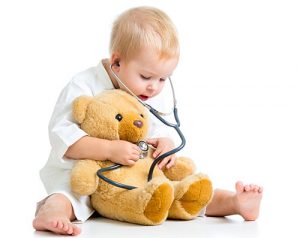Constipation commonly starts around potty training. Discomfort of bowel evacuation leads to avoidance which, in turn, leads to retention and larger/ harder bowel motions so causing more discomfort, and so on. This is called “functional constipation.” Constipation is also quite common in infants at weaning. Constipation can also start in a child starting school because they don’t want to poo in the school toilets.
Most kids with constipation do not have any underlying disease. Hirschsprung’s disease occurs when part of the nervous system to the bowel has not developed fully. This occurs in around 1 in 5000 newborns and leads to constipation from early in childhood. The first poo in a baby is called meconium, and babies with hirschsprung’s disease will often not pass meconium within the first 48 hours of birth. More rarely, the condition can present in an infant or young child – it doesn’t always present in babies but usually does.
Regular toileting – make use of the “gastrocolic reflex” whereby there is a tendency to want to go to the toiler after a meal – so sit the child on the toilet after meals. If the child is old enough to understand rewards then explain that you will reward your child by sitting on the toilet. You can praise your child for actually pooing but the key is reward the process rather than the “result”. You might want to use stars or another reward system. Be consistent with the rewards. It is important not to punish the child for accidents.
Kids of the age between 1 and 3 years require 1.3 litres of water per day while kids aged between 4 and 8 years require 1.7 litres of water per day.
Food, milk and childhood constipation
Try to maintain an adequate fibre intake of fruit, vegetables, high-fibre bread, baked beans, wholegrain breakfast cereals. Processed bran may cause bloating.
Avoid punishing your child for episodes of incontinence. Rewarding your child for targeted behaviors is helpful.
The position of the child on the toilet is important – leaning forwards, knees above the hip level and feet flat on a foot stool or pile of magazine/ books.
You can also reward checking the underwear, drinking enough and or taking required laxatives. But start with sitting on the toilet.

